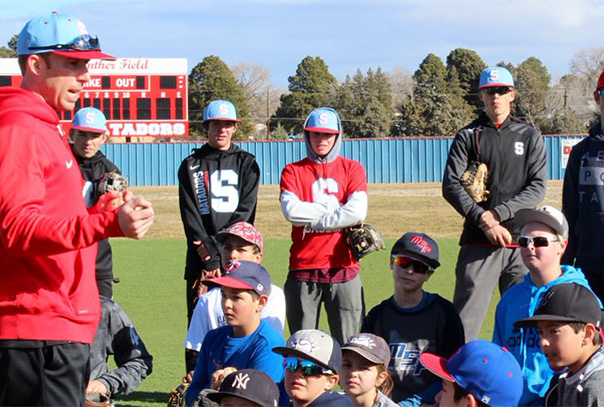 Sandia High School is one of thirteen high schools in the Albuquerque Public Schools (APS) system. The APS is one of the largest districts in the country, serving about a quarter of New Mexico’s public school students in 143 schools that span 1,200 square miles. Its graduation rate in 2021 was 80.3%, a number that has risen more than 14 percentage points in the last seven years. And while that is encouraging, it’s an uneasy feeling that statistically speaking, one in five students walking the halls in our schools won’t graduate from high school. They will succumb to a culture where education may not necessarily be valued accordingly, which makes it imperative for high school coaches to do their parts by building a program where academic success becomes more important than winning and losing.
Sandia High School is one of thirteen high schools in the Albuquerque Public Schools (APS) system. The APS is one of the largest districts in the country, serving about a quarter of New Mexico’s public school students in 143 schools that span 1,200 square miles. Its graduation rate in 2021 was 80.3%, a number that has risen more than 14 percentage points in the last seven years. And while that is encouraging, it’s an uneasy feeling that statistically speaking, one in five students walking the halls in our schools won’t graduate from high school. They will succumb to a culture where education may not necessarily be valued accordingly, which makes it imperative for high school coaches to do their parts by building a program where academic success becomes more important than winning and losing.
With the baseball season occurring towards the end of the school year, it allows plenty of time in the fall to focus solely on being a student. When I was hired in 2017, I started building our program around academics, a priority that all student-athletes should have as number one. Most coaches and parents understand the reality that being paid to play baseball is incredibly difficult, a blessing earned by less than one percent of prep players. If an athlete does not have a diploma or degree, it becomes difficult to find direction in their career or even their lives. Many opportunities are missed when you have to return to school to finish a degree.
I was fortunate to begin my first year with a wonderful freshman class that bought into the idea of putting academics first. What I had to instill in my players was the correlation of academic success translating into success on the field. When you develop the ability to put school ahead of baseball, the product on the field tends to be better. Baseball is kept in its place as a game, a release, a playground. I can coach knowing my players have the discipline and maturity to put their priorities in order.
One player in the class was Jacob Kmatz, who—along with his development on the mound—was able to parlay his success in the classroom into a scholarship at Oregon State University, becoming the first New Mexican to receive such an offer to their prestigious program. His teammate, Aiden May, was another athlete who always put school first and his high GPA led to an opportunity to sign with the University of Arizona. The third member of this trio on the mound was Matt Romero, a 3.8 student who had several offers out of Sandia, committed to the University of New Mexico, and ultimately signed with Pima Community College in Tucson, Arizona.
They were not the only ones in their class who continued their academic and athletic careers at the next level and were also tremendous students. They understood that with 11.7 scholarships available at the NCAA Division I level, they must receive academic aid in order to put together the best scholarship offer. College teams love when high school players have high academics, especially when their grades are high enough for them to offer assistance without cutting into the 11.7.
Each year I have been at Sandia, the team GPA has increased in addition to success on the field. This past season, our team GPA was a record 3.61 and we advanced to the New Mexico 5A state championship game, coming up short in our attempt to end the school’s 42-year state title drought. Despite not winning state, Sandia has won back-to-back district championships for the first time since 1980-81, and awards such as the American Baseball Coaches Association’s Team Academic Excellence Award serve as a wonderful motivational tool to incentivize the players in our program to win the classroom first. Winning will remain a byproduct of all the work put into the classroom from August until the season starts in the spring.
We have been able to make an impact in our community and show that great players can also be great students. I truly believe that it is not a coincidence that the better the players do in the classroom, the better the performance on the field. There has been a 100% graduation rate in the program the past five years, with almost 80% earning opportunities to continue playing in college. They gave themselves a chance with their hard work in the classroom, improved their chances by developing the ability to play stress-free baseball, and have earned the attention from college coaches who can trust that they can handle the rigors of being high-level student-athletes at the next level.